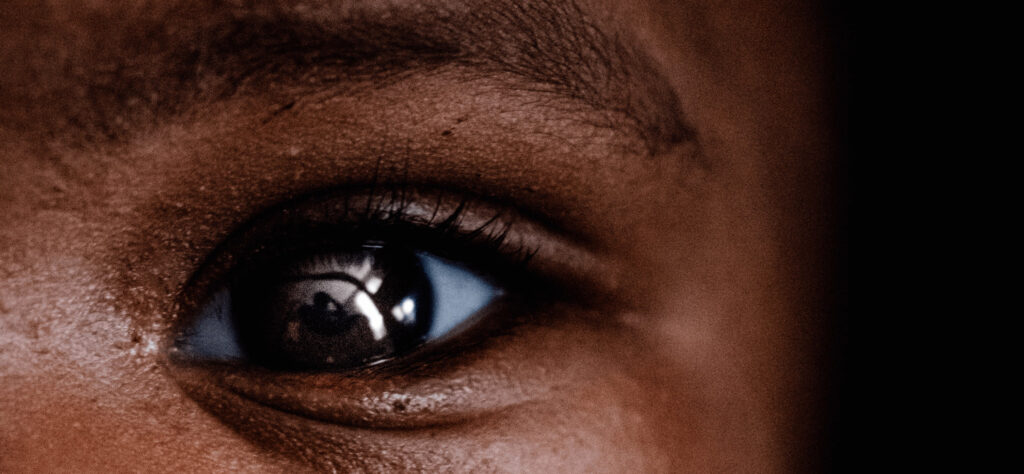Best Ways To Describe Eye Color In Writing
Eyes are the windows to the soul. A common saying and in day-to-day life, we have learned to not discern a person’s personality or quirks based on their eye color. However, when we are writing, there is a lot more freedom. And eye color is a great way to define your character, give the reader hints about their characteristics or journey within your story.
The selection to choose from is also greater in writing than in eye colors that occur naturally. Purple eyes? Red eyes? No problem!
Let’s have a look at how we can express different eye colors even better than just name-dropping the color.
Best Terms for Black Eyes
Black is an eye color chosen for people that are supposed to seem more secretive and mysterious. A character with black eyes can be very passionate and deep, loyal and intuitive. It’s also often an expression of a very powerful (sometimes hidden) energy.
In a negative context, they can make a character appear non-trustworthy, insect- or reptile-like, and downright evil. Characters with black eyes often have sinister intentions or something to hide.
To vary the description of black eyes you can use the following terms:
- anthracite
- coal (black)
- ebony
- jet black
- obsidian
- pitch black
- smokey
- soot
- velvety black
Best Terms for Blue Eyes
Blue eyes are quite common in most newborns, however, it often changes within 2 weeks after birth. This has lead to blue eyes being associated with youth and youthfulness, and innocence. People with blue eyes are usually described as calm and peaceful. They seem to be especially attractive to other characters, too.
In a more negative context, a character with this eye color can literally be blue-eyed, detached from reality, gullible, or even stupid.
Instead of just writing “blue eyes”, try one of these:
- arctic blue
- aquamarine
- baby blue
- cornflower
- electric blue
- ice blue
- indigo
- ocean blue
- sapphire
- sky blue

Best Terms for Brown Eyes
Brown is the most common eye color worldwide. Brown-eyed characters are often self-confident and independent, strong and determined. They are seen as trustworthy by other characters, and as exuding an air of warmth and security.
On the other hand, a brown-eyed character can appear brutish or simple, boring, and even dumb.
There are many wonderful tones of brown you can use, such as:
- amber
- champagne
- chestnut
- chocolate
- dirt
- golden
- honey
- mud
- ocher
- tawny
- topaz
- umber
Best Terms for Gray Eyes
Gray eyes are usually reserved for older characters. But they can also express wisdom and gentleness in younger characters. Usually, these characters appear to be sensitive and analytically.
On the less favorable side, gray-eyed characters are seen as bland and boring.
Consider the following descriptions when a character has gray eyes:
- anthracite
- charcoal
- cloudy (gray)
- graphite
- silver
- slate
- smokey
Best Terms for Green Eyes
Usually, green eyes are seen as mysterious and given to characters that are close to nature. They are often described as curious, passionate, and generally positive and happy.
On the darker side, they are linked to jealousy or representing poison.
Different green hues can be used to describe green eyes:
- chartreuse
- emerald
- forest green
- jade
- olive (green)
- sea green

Best Terms for Other Eye Colors
Hazel Eyes
Eyes that show both green and brown color are commonly called hazel eyes. People with hazel eyes are seen as spontaneous, adventurous, and competitive. The two-toned quality can also indicate mood swings, however.
Shows the eye more green color, the character can appear more mischievous. If the color leans more towards the brown side, the character appears more approachable.
Red Eyes
Red eyes usually don’t occur naturally in humans, except for in albinism. Thus, it’s more of a fantasy color. In animals, it’s more frequent. Red eyes are often associated with courage, strength, ambition, and power. However, it’s also used to express rage and anger, a lust for revenge, and associated with dark intentions and evil.
Depending on what you want to use it for, the following terms can be used for red eyes:
- blood red
- deep red
- fiery
- hot pink
- pink
- wine red
Violet Eyes
Purple or violet eyes are extremely (!) rare. Thus, they fit more into a fantasy context – or if your character is using contacts. A very sophisticated and spiritual color, characters with violet eyes are often associated with royalty and riches, or divination and clairvoyance. Since it’s a very powerful color, this eye color is often used for leaders, royals, or oracles, and witches.
The following terms can be used for eyes of this color:
- amethyst
- hyacinth
- purple
- ultramarine
White Eyes
Usually, white eyes are considered blind. A character’s eyes turn white or are white if they are not able to see out of them (or one of them) anymore. The limitation here, however, is only measured by your creativity.
Instead of “white”, you can also use these terms:
- blind
- cloudy
- milky
- snow white
Yellow Eyes
In animals, a yellow eye-color is quite common. Consider cats, dogs, predator birds, snakes, and the like. Thus, characters with yellow eyes are often associated or compared to a certain animal, taking over their features or characteristics.
There are a few nice term you can use to describe yellow eyes:
- golden
- honey
- sunny
Heterochromia
Of course, you have the option to give your characters two differently colored eyes. While this occurs in the natural world, heterochromia is still rare in humans. It can be used to express a duality in a person’s character. Often, these characters are seen as especially significant, mystical, magical, supernatural, or simply special.

